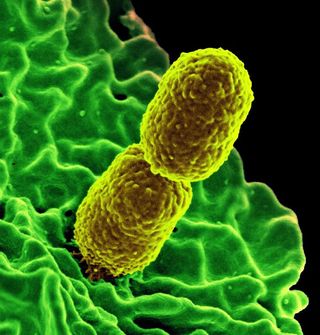Catchy Coughs
They cause outbreaks, epidemics, even pandemics that spread from continent to continent. Modern medicine and hygiene have given us some control over devastating infectious diseases, even eradicating smallpox, but, for the most part they remain with us, often preying upon the poorest and most vulnerable.
Smallpox

A photo taken in 1975 shows the village cemetery in the Bangladesh countryside where smallpox victims were buried. The disease is believed to have killed 46 percent of its victims at a hospital in the Dacca, Bangladesh, ravaging the country for centuries.
Scientists think that smallpox, which causes skin lesions,emerged about 3,000 years ago in India or Egypt, before sweeping across continents. The Variola virus, which causes smallpox, killed as many as a third of those it infected and left others scarred and blinded, according to the World Health Organization. In 1980, the WHO declared the disease officially eradicated, after a decade-long vaccination campaign. The last remaining samples of the virus are being held in facilities in the United States and Russia.
Plague

Unlike smallpox, this ancient killer is still with us. Plague, which is caused by a bacterium carried by fleas, has been blamed for decimating societies including 14th-century Europe during the Black Death, when it wiped out roughly a third of the population, including in Basel, Switzerland, depicted in this painting from 1349. The disease comes in three forms, but the best known is bubonic plague, which is marked by buboes, or painfully swollen lymph nodes.
Plague is now found in animals throughout the world, particularly in the western U.S. and Africa. In September 2016, the World Health Organization reported 783 cases (including 126 deaths) worldwide from plague.
Malaria

Although it is preventable and curable, malaria has a devastating effect in Africa, where the disease accounts for 20 percent of all childhood deaths, according to the World Health Organization. It is present on other continents as well. A parasite carried by blood-sucking mosquitoes causes the disease, which is first characterized by fever, chills and flu-like symptoms before progressing on to more serious complications. By 1951, the disease was eliminated from the U.S. with the help of the pesticide DDT. A subsequent WHO campaign to eradicate malaria was successful only in some places, and the goal was downgraded to reducing transmission of disease, according to the U.S. Centers for Disease Control and Prevention.
The World Health Organization has distributed so-called long-lasting insecticidal nets in order to reduce bites from malaria-carrying mosquitoes, including in Cambodia (shown here).
Influenza

This 3D model illustrates a generic flu virus (there are different types). A seasonal, respiratory infection, flu is responsible for about 3 million to 5 million cases of severe illness, and about 250,000 to 500,000 deaths a year across the globe, according to the World Health Organization.
Periodically, however, the viral infection becomes much more devastating: A pandemic in 1918 killed about 50 million people worldwide. As became apparent from "swine flu" and "bird flu" scares in recent years, some influenza viruses can jump between species. [10 Deadly Diseases That Hopped Across Species]
Tuberculosis

Potentially fatal "TB" is caused by the bacterium Mycobacterium tuberculosis, which usually attacks the lungs and causes the signature bloody coughs. The X-ray, shown here, reveals the chest of a patient suffering from far-advanced tuberculosis. The bacterium does not make everyone it infects sick, and up to one-third of the world's population currently carries the bacterium. And among people infected with TB (but not HIV), 5 to 10 percent become sick or infectious at some time during their lifetimes.
A full-blown TB infection is more common among those who are also infected with HIV. The TB bacterium has formed a deadly alliance with the immune-system-destroying HIV, with each disease worsening the other, according to the World Health Organization.
HIV/AIDS

At the end of 2015, about 36.7 million people were living with a Human Immunodeficiency Virus (HIV) infection and about 1.1 million died from it, according to the WHO.
While many of the worst offenders on this disease list have a long-standing relationship with humans, HIV is a recent arrival. HIV's decimating effect on certain immune system cells was first documented in 1981. By destroying part of the immune system, HIV leaves its victims vulnerable to all sorts of opportunistic diseases. It is believed to have emerged from Simian Immunodeficiency Virus (SIV), which infects apes and monkeys.
Cholera

Cholera causes acute diarrhea and, if left untreated, a severe infection can kill within hours. The bacterium responsible is usually found in food or water contaminated by infected feces. Thanks to improved sanitation, cases of cholera have been rare in industrialized nations for the last 100 years.
During the 19th century, cholera spread from its home in India, causing six pandemics that killed millions of people on all continents, according to the World Health Organization.
During a cholera epidemic in Peru in 1992, a hospital waiting room (shown here) was converted to an emergency cholera ward.
More recently, a cholera outbreak in Haiti, which began after that country's devastating 2010 earthquake, had killed more than 9,000 people and sickened about 775,000 more, as of April 2016, according to Slate.
Rabies

No longer a significant threat in the United States, rabies is still a deadly problem in other areas of the world. Rabies causes "tens of thousands" of deaths every year in countries in Africa and Asia, according to the WHO. Approximately two people die yearly in the U.S. from the disease, which is transmitted to humans through the saliva of infected animals, particularly dogs.
The initial symptoms of rabies can be hard to detect in humans, as they mimic that of the flu and include general weakness, discomfort and fever. But as the disease progresses, patients may experience delirium, abnormal behavior, hallucinations and insomnia, according to the Centers for Disease Control and Prevention (CDC). To date, fewer than 10 people who have contracted rabies and started to exhibit symptoms have survived.
However, a rabies vaccine does exist and is usually very effective in both preventing infection with the virus and treating infected individuals before they begin to show symptoms.
Pneumonia

Pneumonia might not conjure up the same dread as diseases like rabies or smallpox, but this lung infection can be deadly, especially for those older than 65 or younger than 5.
The disease can be caused by bacteria, a virus or a combination of both, according to Dr. Amesh Adalja, an infectious-disease specialist and a senior associate at the University of Pittsburgh Medical Center's Center for Health Security. A person can also get pneumonia from a fungal infection, parasites or reactions to certain medicines, Adalja told Live Science in September 2016.
In 2014, there were 50,622 deaths from pneumonia in the United States, according to the CDC.
Infectious diarrhea

Rotavirus, the most common cause of viral gastroenteritis (inflammation of the stomach and intestines), is a diarrheal disease that can be deadly. In 2013, rotavirus killed 215,000 children under the age of 5 globally, according to the WHO. About 22 percent of those deaths occurred in India alone.
The virus causes dehydration, brought upon by severe, watery diarrhea and vomiting.
continue here: https://www.livescience.com/13694-devastating-infectious-diseases-smallpox-plague.html


